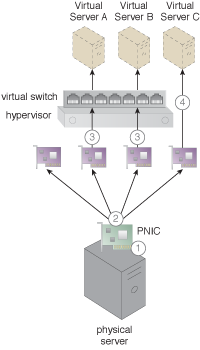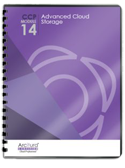Cloud Computing Patterns, Mechanisms > Data Management and Storage Device Patterns > Single Root I/O Virtualization
Single Root I/O Virtualization (Erl, Naserpour)
How can a single physical I/O device be virtualized and shared between multiple cloud service consumers?

Problem
A single I/O device needs to be provided to multiple cloud service consumers, but it has an inherent physical limitation of only being able to service one at a time.
Solution
The functionality of the physical I/O device is abstracted and its features are presented to multiple cloud service consumers, so that each only sees its own virtualized instance.
Application
PNIC hardware is used to virtualize the I/O device’s functionality and the abstracted functions are presented via the use of virtualization techniques.
Mechanisms
Compound Patterns
Burst In, Burst Out to Private Cloud, Burst Out to Public Cloud, Cloud Authentication, Cloud Balancing, Elastic Environment, Infrastructure-as-a-Service (IaaS), Isolated Trust Boundary, Multitenant Environment, Platform-as-a-Service (PaaS), Private Cloud, Public Cloud, Resilient Environment, Resource Workload Management, Secure Burst Out to Private Cloud/Public Cloud, Software-as-a-Service (SaaS)

A physical NIC card attached to a physical server supports the application of the Single Root I/O Virtualization pattern.
This pattern is covered in CCP Module 14: Advanced Cloud Storage.
For more information regarding the Cloud Certified Professional (CCP) curriculum, visit www.arcitura.com/ccp.
This pattern is covered in CCP Module 17: Advanced Cloud Virtualization.
For more information regarding the Cloud Certified Professional (CCP) curriculum, visit www.arcitura.com/ccp.

